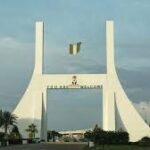Neighbourhoods combine to form a district, which is the next hierarchy in the city development concept. The threshold population ranges between 20,000 and 40,000 and with higher facilities than the neighbourhood. Population threshold determines the capacity of service facilities to be provided that would ensure efficient and effective services to communities. These are aimed at arresting the issues of scarcity, reduction of redundancy and promoting effective accessibility.
The importance of health services can never be overemphasised. The grade and capacity of the facilities are tied to the land size provided to meet the objective. Inadequate or ineffective health services delivery in any district commences with compromising the provided land size or the total change of the provided land use.
Accordingly, for health services, the categories are, Health, or Neighbourhood Clinic with site or plot size of 1.18Ha, Health, or District Centre also with site size of 1.81Ha. A referral hospital with a site size of 5.9Ha, with a capacity of at least 250 beds, is to serve 200,000 – 250,000 population. And 1,250 beds capacity central hospital complex, with 40Ha site size.
Within Phase I of the city development, these hierarchies are translated to Neighbourhood Clinics, District Health Centres, or General Hospitals, as we have them in Garki, Wuse, Asokoro and Maitama districts, and the National Hospital Complex in the Central Area District. According to the original concept of the Abuja Master Plan, these are to be replicated in all the other districts of the city.
- Understanding Abuja master plan and necessity for its protection (I)
- Tinubu tax reform: Cry wolf and a lofty opportunity to act
Under this concept, health clinics would be developed in the more rural areas of the FCT, distributed to serve populations of between 6,000 and 10,000 people. Health Centres would be developed in town centres, satellite cities and residential areas in the Federal Capital City, distributed to serve populations of approximately 20,000 people.
The absence of health facilities in any district as expounded does not mean that provisions were not made; but are yet to be implemented. In some instances, the lands could be ceded for private hospitals, due to the effective involvement of the private sector in health services provision. However, the purpose clause shall be clinic, health centre or hospital as the case may be.
Due to the importance of the health sector to human survival, the FCT Administration must be alert on ensuring that the lands appropriated to the sector are not abused, or changed for any other use. There were instances of these violations due to official high-handedness or negligence of duties from the monitoring officers. Lands earmarked for hospitals yet to be implemented would be unceremoniously changed for housing or commercial estate. Or, a health centre or clinic would obtain building plan approval in line with the purpose clause, but would later be converted for other uses, like a nightclub.
Similarly, being the national capital, security services are given adequate attention. The international standard of approximately one major police installation for every 75,000 to 125,000 persons represents a population service area of two-to-three times smaller than the typical Nigerian urban practice.
A local police installation erstwhile known as the “charge office” containing a small detention facility was included in the programme. Local police stations are to be located in all neighbourhood centres.
To facilitate public safety coverage, police stations are to be centrally located and on major arterial accesses. In the satellite towns, local stations are to be distributed to serve a population of between 30,000 to 60,000 persons.
Local stations are also to be located in town centres having a minimum population of 15,000. A higher level is the major police station housing the district police headquarters for the local police stations, with facilities for police records – a small jail, a police garage, a juvenile police department, a crime detection unit, a traffic control unit, etc.
Magistrate courts are located either near or on the same ground as the police facility. In general, the district police stations are to serve a population of 30,000 – 60,000 as we have them now in Garki I and Wuse I districts, while headquarters at the sector levels is to serve 200,000 – 250,000 population.
It was assumed that planning should prepare for improved responsiveness and accessibility for traffic control, crime detection and prevention, and public festival and national event management. Therefore, a more comprehensive police hierarchy for the security of the Federal Capital city was assumed in the programme. Others are fire stations, allocated on a service response time system, with 2Ha proposed for the City headquarters.
It is important to state that as in all human endeavours, master plans are not divine; as such they are not infallible. Also, there is no perfect implementation. On the other hand, they are documents that deserve the utmost respect, as long as the project that necessitates the production of the plan is imperative.
Changes to the plan without any genuine reasons are tantamount to insulting the purpose of initiating the project. The document would thus be rendered irrelevant. Unfortunately, we are now inevitably, confronted with such catastrophe.
Concluded

 Join Daily Trust WhatsApp Community For Quick Access To News and Happenings Around You.
Join Daily Trust WhatsApp Community For Quick Access To News and Happenings Around You.


